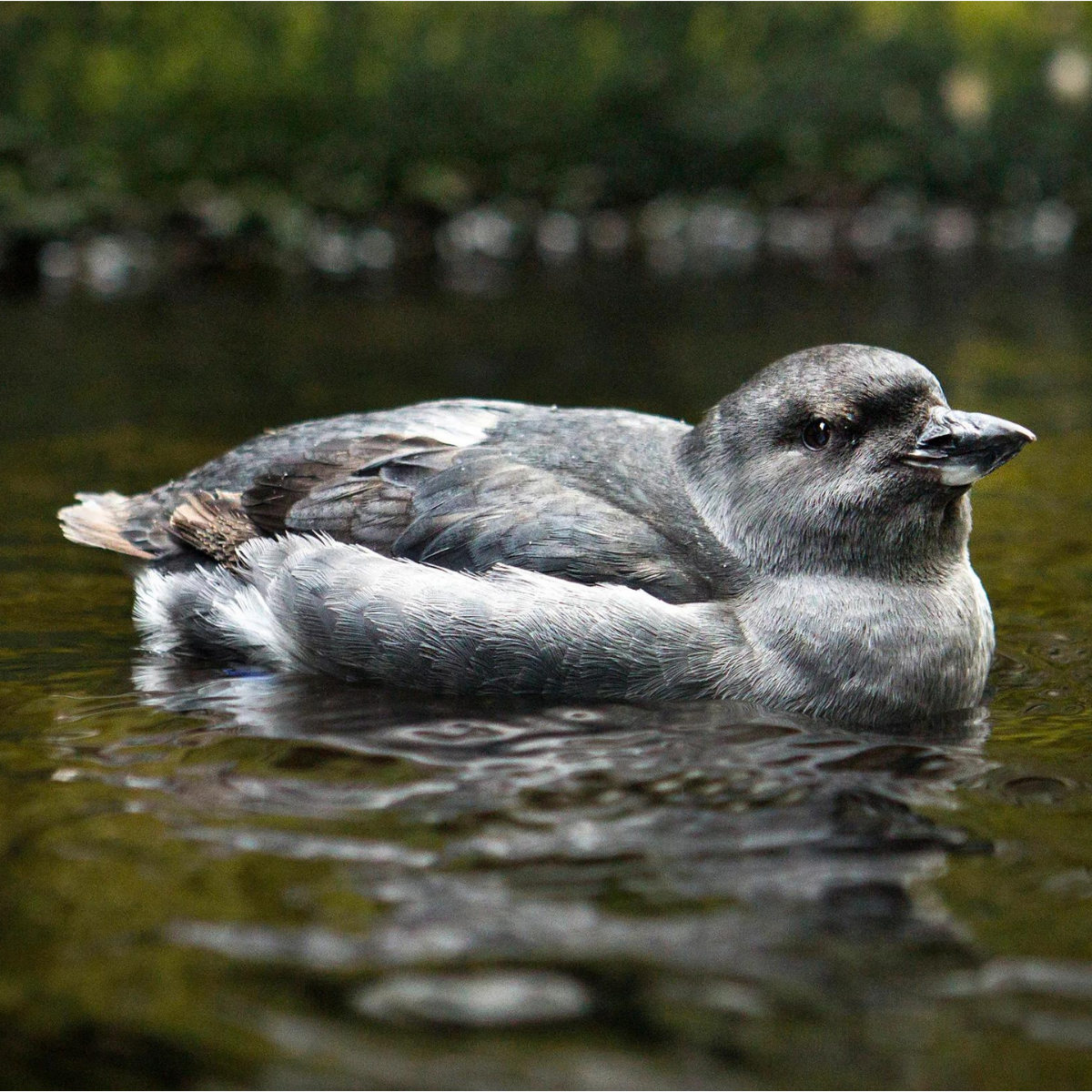Bird of the Month: Cassin’s Auklet
Written by Andy McCormick
Andy McCormick, Volunteer and Former Board President of Eastside Audubon
Cassin’s Auklet is one of the most common and widespread alcids. It has a world population of 3.5 million strong (Opar), but few people see them because they spend their lives at sea and in the Arctic. Occasionally, they can be seen from shore, but you have to be out in a boat to get a good look at them. They feed far offshore in winter when they are found from Washington south to Baja California where they feed over the edge of the continental shelf where upwelling of cold water occurs. Their diet consists primarily of small aquatic crustaceans, fish larvae, and crab and squid larvae (Ainley, et al).
Cassin’s Auklet
Scientific Name: Ptychoramphus aleuticus
Length: 9”
Wingspan: 15”
Weight: 6 oz (185 g)
AOU Alpha Code: CAAU
BREEDING ALONG THE PACIFIC COAST
Most Cassin’s Auklets are migratory. Northern birds move south to waters off Washington, Oregon, and California in winter. There is a stationary population around the Farallon Islands in California. Northern birds breed earlier than southern populations with egg-laying beginning in April. Auklets breeding in southern California waters can produce a second brood. One egg is deposited in a burrow excavated by both male and female using their sharp toenails, or in a natural crevice or on a grass tussock. No nest is built.
Incubation is long, lasting over a month and sometimes nearly two months. During breeding and raising of young Cassin’s Auklets fly almost exclusively at night bringing food back to the nest where the regurgitate it when the young peck at their bills. Between 41 and 50 days later the young can fly from the nest to the water and dive immediately (Kaufman).
STATUS AND CONSERVATION
Despite their large population, Cassin’s Auklets are vulnerable to predation from cats, foxes, and raccoons, which has led to the extirpation of entire colonies from former nesting islands. Conservation efforts which have focused on removal of carnivorous mammals and rodents from these islands have benefited Cassin’s Auklets and other seabirds, although details of improvement are not fully documented (Ainley, et al).
TAXONOMY AND NAMING
Cassin’s Auklet is in the genus Ptychoramphus, folded beak, from Greek ptux, anything in folds, and ramphos, crooked beaks of birds of prey with reference to ridges on the bill. Aleuticus is for the range of the Aleutian Islands, Alaska. The common name auklet is a little auk, from the Old Norse alka, their name for many different northern birds (Holloway).
Cassin’s Auklet is named after John Cassin (1813-1869), a Philadelphia ornithologist, who catalogued bird skins from all over the world (Mearns and Mearns). He was so highly respected that three other bird species were named after him: Cassin’s Kingbird, Cassin’s Sparrow, and Cassin’s Finch. Just a few years ago when the Solitary Vireo was split, the western subspecies gained full species status and was named Cassin’s Vireo.
CASSIN’S AUCKLET DIE-OFF IN PACIFIC OCEAN
Along the northeastern Pacific Ocean during the winter of 2014, volunteer beach observers collected over 3,500 dead Cassin’s Auklets. Since most dead auklets sink, these collected birds are thought to be part of a die-off of an-estimated tens of thousands of Cassin’s Auklets. Scientists are trying to determine if masses of warm water hundreds of meters deep in the ocean combined with low winds prevented the usual upwelling of cold waters which support copepods and krill upon which Cassin’s Auklets feed. Many of the dead auklets were juvenile birds and when their stomachs could be examined, they were found empty. This change in ocean water temperature seems to have led to a lack of proper food for the first-year auklets and their ultimate starvation. (See Opar, A. (2015). Lost at Sea, Audubon, March-April, pp 22, 54-56.)
Photo credit Cathleen Shattuck.
References available upon request from amccormick@eastsideaudubon.org.



